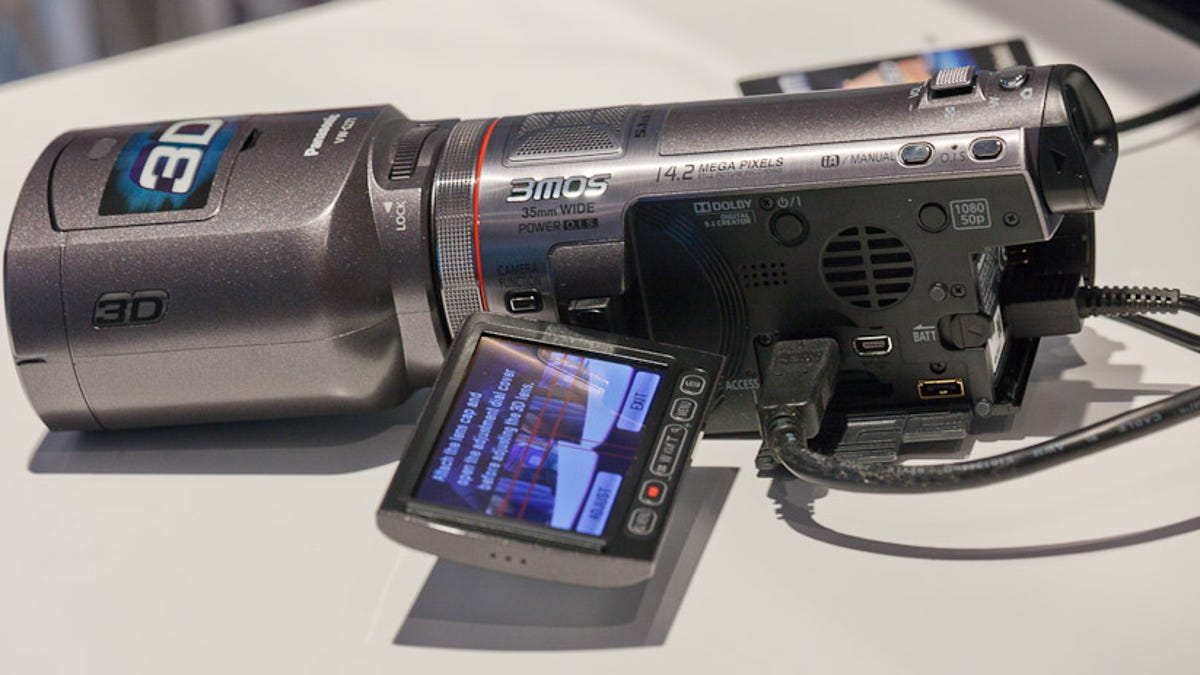Panasonic's push: Record your own 3D video
At the IFA electronics show in Berlin, Panasonic shows off new, larger plasma 3D TVs, and touts its 3D camcorder. Its goal here is to help you "keep your precious moments in 3D."
BERLIN--Panasonic made its 3D sales pitch Wednesday, showing new 3D products and saying it's plugged a final gap: letting people record their own 3D video.
At the IFA electronics show here, the company touted its HDC-SDT750 camcorder and offered attendees a chance to try the camera on their own. The model combines a regular 1080p video camera with an optional 3D lens attachment that gathers the necessary dual views for the left and right eye.
"We have already produced 3D eyewear, TVs, theaters, Blu-ray drive players. However, there is still one thing missing," said Makoto Nagura, director of Panasonic's video camera business unit. "That is to keep your precious moments in 3D."
A sales effort will be important to convince people to purchase the premium products. The video camera will go on sale in October for about $1,399. Handling the video also raises complications. The 3D video can be copied and shown using HDMI, SD cards, or USB, Panasonic said, but don't expect consumer video editing to be a simple matter.
The 3D revolution is important for several reasons. First, it offers novelty for an electronics industry that continually seeks to generate demand for the latest, premium-price thing.
Second, it offers a potentially more immersive experience for those watching video or playing games.
Last, it requires content producers to retool for a technology that's significantly more computationally intense and bandwidth-sapping. Streaming video is tough, but streaming 3D video is tougher.
Also at the IFA show, Panasonic showed off updates to the rest of its 3D line, including new TVs, Blu-ray players, home theater systems, and glasses.
The two new 3D-capable home theater systems, the SC-BTT750 and SC-BTT350, that will go on sale in September.
The higher-end SC-BTT750, with a cost of about $1,020, combines a Blu-ray player, six tall-and-thin speakers, and a wireless network to stream video to a compatible TV. The SC-BTT350, at about $700, has six conventional speakers and lacks the wireless ability, though it can be added later.
For TVs, Panasonic announced two new members of its NeoPDP plasma-based VT20 line with 42-inch and 46-inch screens, both available in September.
The TX-P46VT20E will cost about $2,800, and the TX-P42VT20E about $2,550.
Also at IFA, Panasonic showed off a mammoth 3D-capable TV, a plasma screen with a 152-inch diagonal. Its resolution is 4,096x2,160 pixels. The screen should be available in 2011, Panasonic said.
Of course, not everybody is happy with 3D. It's seen, sometimes rightly, as gimmicky. But as the swath of 3D movies demonstrates, it's a real transformation of entertainment, just as the arrival of audio and color were in decades past.
Updated at 2:13 p.m. PDT to restore a missing digit describing the 152-inch plasma TV's 4,096x2,160 resolution.


